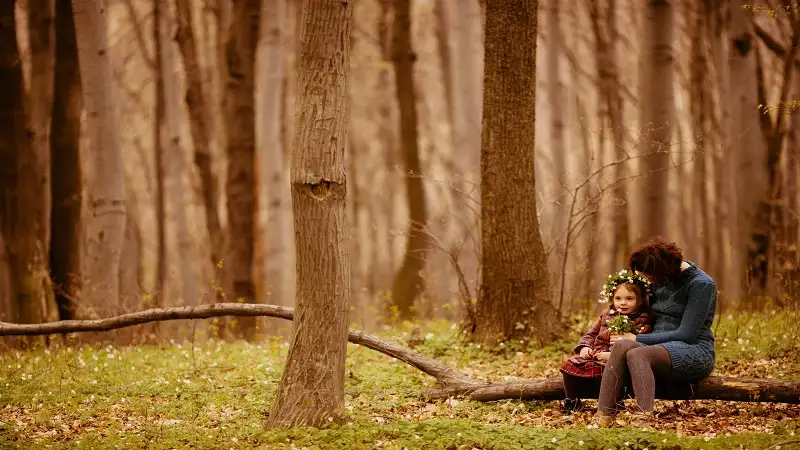Trees stand as the planet’s oldest living organisms, silently watching over the changing landscapes and evolving species. From the towering redwoods of California to the delicate cherry blossoms of Japan, trees symbolize strength, beauty, and resilience. Beyond their striking presence, they play a crucial role in maintaining the balance of our ecosystems. In this article, we explore the many dimensions of trees—their environmental significance, cultural importance, and how humans can help protect these timeless guardians.
The Ancient History of Trees
Trees have existed for more than 350 million years, predating even the dinosaurs. The first forests emerged during the Devonian Period, transforming the planet’s atmosphere by releasing oxygen and absorbing carbon dioxide. Fossil records show that ancient trees like Archaeopteris laid the groundwork for modern ecosystems. This long evolutionary journey highlights the adaptability of trees, enabling them to survive mass extinctions and climatic shifts.
Essential Role in the Environment
One of the most critical functions of trees is their ability to stabilize the environment. They provide oxygen through photosynthesis, acting as the Earth’s lungs. A mature leafy tree can produce enough oxygen to sustain two people annually. Additionally, trees absorb carbon dioxide—a major greenhouse gas—helping mitigate climate change. Their roots prevent soil erosion, while their canopy cools surrounding areas, reducing the urban heat-island effect in cities.
Biodiversity Hotspots
Forests and woodlands are home to more than 80% of terrestrial species of animals, plants, and fungi. Birds nest in their branches, mammals seek shelter in their trunks, and insects rely on their leaves and bark. The Amazon rainforest alone contains over 16,000 different tree species, sustaining countless other organisms. By supporting such vast biodiversity, trees ensure that ecosystems remain resilient and capable of adapting to environmental changes.
Trees and the Water Cycle
Trees play an indispensable role in regulating the planet’s water cycle. Their roots absorb groundwater, releasing moisture into the atmosphere through a process known as transpiration. This process contributes to rainfall patterns and maintains humidity levels. In regions prone to drought, trees help replenish groundwater and maintain streams, making them vital for both human and wildlife survival.
Cultural and Spiritual Significance
Across cultures and centuries, trees have symbolized wisdom, life, and connection. In many traditions, they are sacred. The Bodhi tree in India, under which Siddhartha Gautama attained enlightenment, remains a symbol of spiritual awakening. In Norse mythology, Yggdrasil, the World Tree, connects the heavens, earth, and underworld. These cultural representations highlight how trees inspire awe and reverence far beyond their ecological functions.
Economic Importance
Trees provide countless resources essential to human life. Timber, fruit, nuts, rubber, and medicinal compounds are all derived from trees. Industries ranging from construction to pharmaceuticals depend on forests. Even non-timber products like resins, essential oils, and natural dyes support local economies around the world. Sustainable forestry practices ensure that these resources can be harvested without endangering ecosystems.
Urban Trees: A Modern Necessity
In urban environments, trees are more than ornamental features—they are vital for public health. Street trees reduce air pollution by filtering particulates and absorbing harmful gases. Shade from trees can lower energy costs by cooling homes and streets, while green spaces encourage physical activity and mental well-being. Research shows that neighborhoods with ample tree cover report lower stress levels and improved community cohesion.
Climate Change Warriors
Trees are among the most effective natural tools in combating climate change. One fully grown tree can take in about 48 pounds of carbon dioxide each year. Large-scale afforestation and reforestation projects are integral to reducing global warming. However, protecting existing old-growth forests is even more critical, as these ecosystems store immense amounts of carbon that would otherwise be released into the atmosphere if destroyed.
Threats to Trees Worldwide
Despite their resilience, trees face unprecedented threats. Deforestation for agriculture, logging, and urban development destroys millions of acres of forest annually. Pests, diseases, and invasive species further weaken tree populations. Climate change exacerbates these issues by altering rainfall patterns and increasing the frequency of wildfires. If these threats continue unchecked, the loss of forests will have devastating consequences for global biodiversity and climate stability.
Conservation and Reforestation Efforts
Efforts to protect and restore forests are underway across the globe. Organizations like the Rainforest Alliance, World Wildlife Fund (WWF), and the United Nations’ REDD+ program are working to reduce deforestation and promote sustainable land use. Local initiatives, such as community tree-planting drives and urban greening projects, also play a vital role. Supporting these efforts through donations, advocacy, and personal participation is crucial.
How Individuals Can Help
Every individual can contribute to tree conservation. Planting native species in backyards or community spaces supports local ecosystems. Reducing paper consumption, recycling, and choosing sustainable wood products lessen the demand for deforestation. Supporting policies that protect old-growth forests and investing in reforestation projects also make a significant difference. Even small actions, when multiplied across millions of people, can yield profound results.
Future of Our Forests
The future of trees depends largely on human choices. With the right policies and global cooperation, it is possible to halt deforestation and restore degraded forests. Technological advancements, such as drones for seed planting and genetic research to develop disease-resistant species, offer hope. Yet, the most important factor remains our collective will to protect these guardians of the earth.
Conclusion: Protecting Our Timeless Guardians
Trees are more than just elements of the landscape—they are living monuments to resilience and renewal. As nature’s timeless guardians, they sustain life, combat climate change, and inspire cultures across the world. By understanding their importance and taking action to protect them, we safeguard the health of our planet for future generations. Whether through policy, community action, or personal responsibility, each of us holds the power to ensure that trees continue to thrive for centuries to come.
